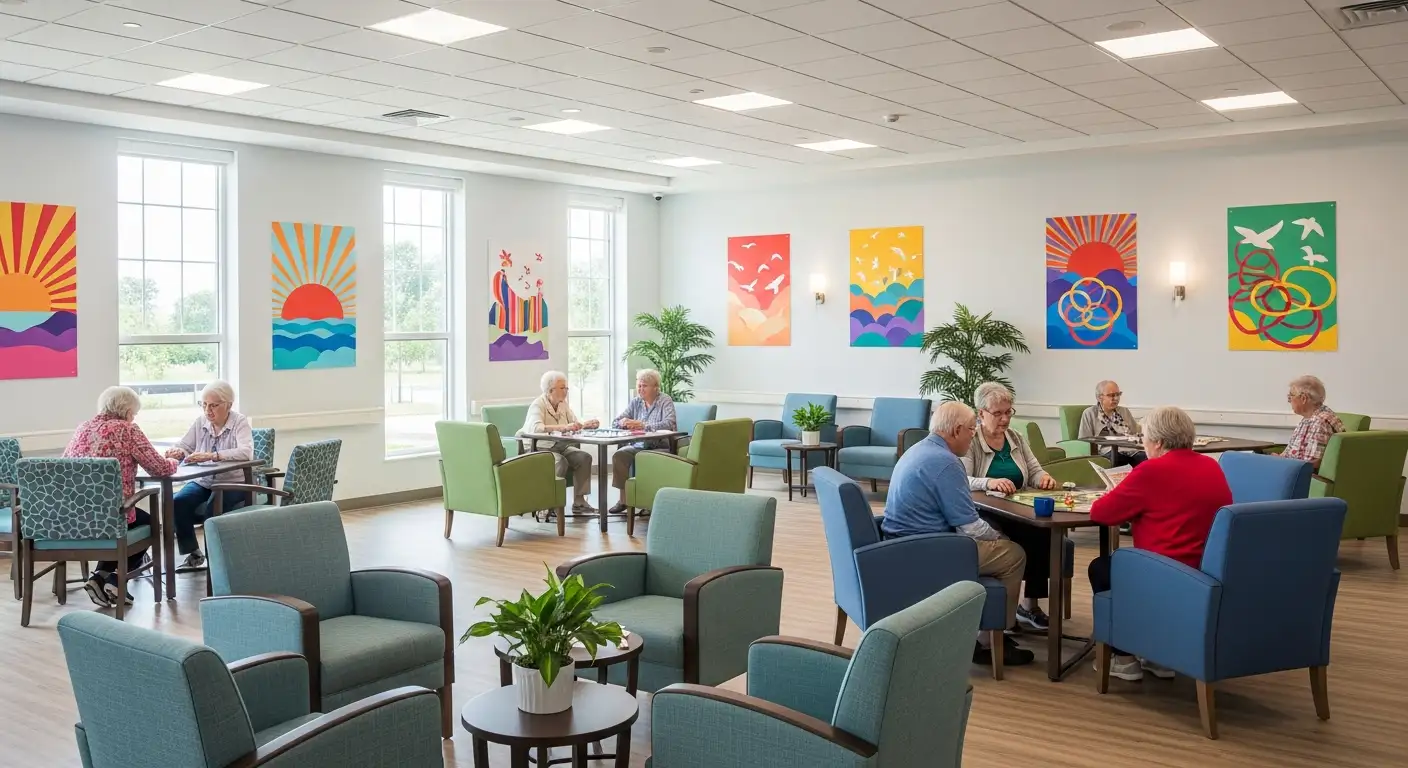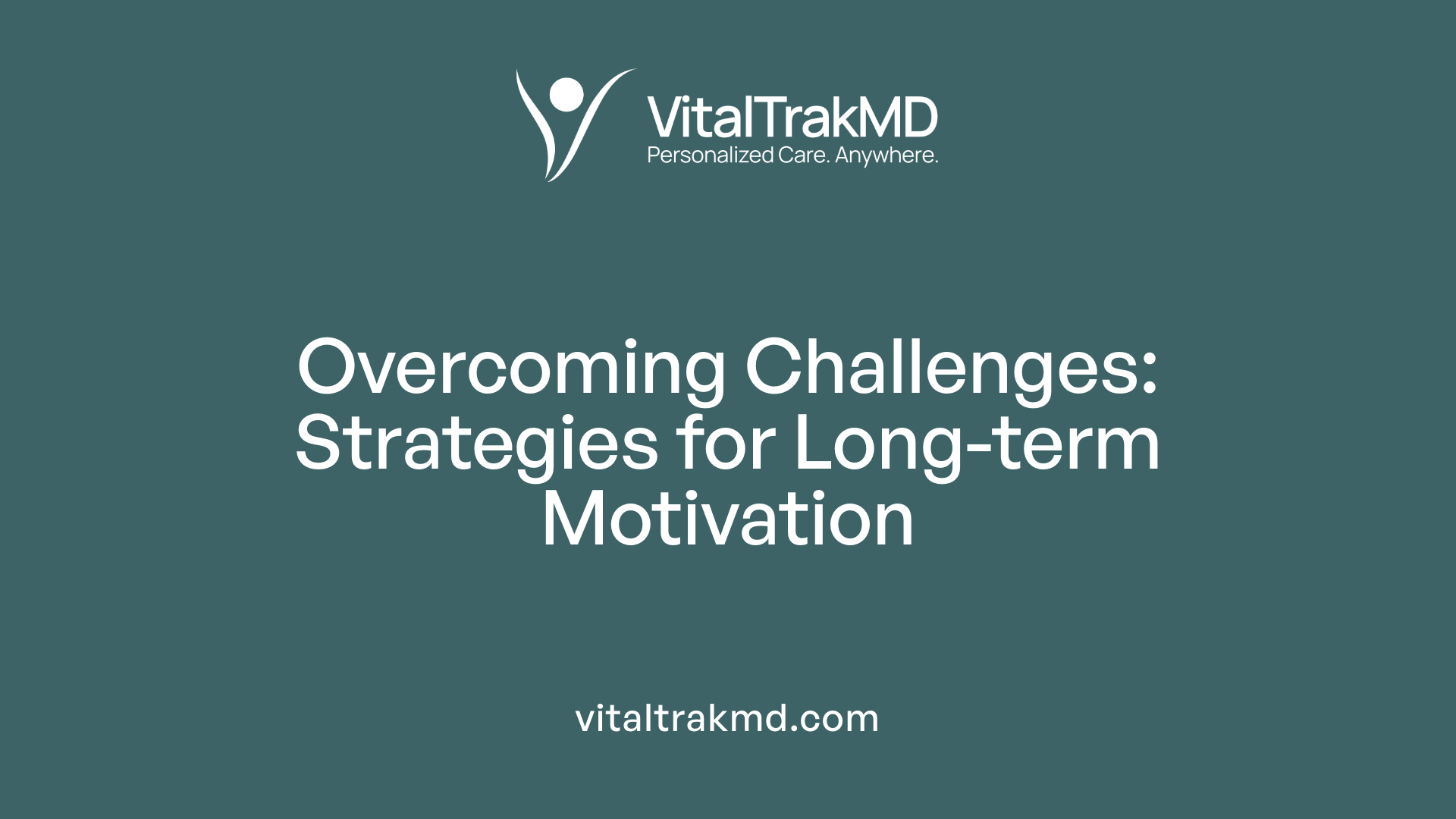The Importance of Motivation in Sustaining Senior Wellness Plans

Understanding the Critical Role of Motivation in Senior Wellness
As the aging population grows, so does the importance of wellness programs tailored to seniors. Chronic conditions affect over 80% of adults aged 65 and older, making proactive health management essential. Yet participation in health-promoting activities among seniors remains lower than ideal. Motivation emerges as a pivotal factor in initiating and sustaining these wellness plans, influencing physical health, mental well-being, and social engagement. This article explores how motivation underpins senior wellness efforts, driving behavior change and enhancing quality of life.
The Foundation of Senior Wellness: Physical, Mental, and Social Health

What does holistic wellness for seniors include?
Holistic wellness encompasses physical health, mental well-being, social engagement, and spiritual wellness. These interconnected aspects work together to support overall senior health. Activities such as walking, yoga, swimming, mindfulness meditation, and participation in social groups nurture these dimensions, fostering balance and vitality.
What common chronic conditions affect seniors?
Multiple chronic conditions increase sharply with age; over 80% of adults aged 65 and older experience them. Examples include diabetes, heart disease, arthritis, and cognitive impairments. Managing these conditions through wellness programs helps prevent complications and improves quality of life.
How do physical activities benefit seniors?
Engaging in exercises like walking, yoga, swimming, and tai chi enhances cardiovascular health, joint flexibility, balance, and muscle strength. These activities also reduce fall risk and support brain health, contributing to successful aging. Gentle, low-impact options accommodate different fitness levels and physical limitations.
Why is mental stimulation and social connection important?
Mental activities and social involvement reduce risks of cognitive decline, loneliness, and depression. Lifelong learning, creative hobbies, group discussions, and social gatherings promote emotional well-being and cognitive function, key for delaying dementia and maintaining a high quality of life.
How can wellness programs improve overall health?
Wellness programs encourage healthy behaviors such as physical activity, balanced nutrition, stress management, and preventive health screenings. By addressing physical, mental, and social health, these programs reduce the burden of chronic diseases and enhance emotional and cognitive well-being among seniors, leading to improved overall health and wellness.
Senior Preferences and Personalization in Wellness Program Design

Preferences for in-person activities and peer groups
Seniors show a strong preference for wellness programs that offer in-person activities. They tend to favor structured routines that provide consistency and familiarity. Additionally, engaging with peers of the same age and gender not only encourages participation but also fosters a sense of community and mutual support among participants.
Differences in preferences by age and gender
Preferences for wellness activities and how they are delivered vary notably depending on age and gender. While older seniors might prefer gentler activities and more social interaction, younger seniors often seek more physically vigorous options. Gender influences preferences as well, with men and women typically favoring different types of activities and social settings within wellness programs.
Role of current healthy behaviors in shaping preferences
An individual's existing healthy behaviors also play a significant role in shaping their wellness program preferences. Seniors who already engage in regular physical activity or have established healthy eating habits are more likely to prefer interactive and dynamic program features. Conversely, those with less healthy lifestyles might gravitate toward more supportive and educational program elements.
Program delivery methods enhancing engagement and effectiveness
Designing wellness programs that incorporate seniors' preferences—such as in-person sessions, peer group activities, and tailored routines—can significantly enhance participant engagement and the overall effectiveness of the program. When programs align with these preferences, seniors are more motivated to participate consistently, leading to better health outcomes and improved wellness management.
Setting SMART Wellness Goals for Seniors: Motivation through Clear Objectives
Importance of Assessing Current Health and Setting Priorities
Before setting wellness goals, seniors should undergo a health check-up to assess current status and identify priorities, such as managing chronic diseases or improving mobility. This foundational step ensures goals are relevant to personal health needs and capabilities.
Utilizing SMART Criteria for Goal Setting
Wellness goals for seniors are most effective when they follow the SMART framework: Specific, Measurable, Achievable, Relevant, and Time-bound. This structure fosters clarity and focus, making it easier to track progress and sustain motivation.
Examples of Wellness Objectives
Practical examples include daily step targets, such as walking 10,000 steps, and nutritional goals like consuming five servings of fruits and vegetables each day. Other objectives may involve flexibility improvement through classes, managing chronic condition markers like reducing A1C levels, and maintaining regular social activities.
Adapting Goals to Overcome Physical Limitations and Maintain Motivation
Seniors often face challenges including physical constraints and motivational fluctuations. Adapting goals to start slowly, seek support, and remain flexible allows for continual progress without overwhelming the individual. Celebrating small wins and engaging support systems are crucial strategies to sustain engagement.
Behavioral Changes for Long-Term Weight Loss
Setting clear, specific, and measurable goals aligned with seniors’ abilities fosters sustainable lifestyle changes. Incorporation of self-monitoring and stimulus control techniques raises awareness of habits, enabling healthier routines. Support systems and motivational interviewing encourage accountability, improving adherence and enhancing long-term weight management outcomes.
Overcoming Barriers and Sustaining Motivation in Senior Wellness Plans

What are common challenges faced by seniors in wellness programs?
Physical limitations and lack of motivation often hinder seniors from fully engaging in wellness activities. These challenges can result from chronic conditions, decreased mobility, or emotional factors that reduce enthusiasm for starting or continuing exercise and healthy eating habits.
How can seniors make gradual progress and remain flexible in their wellness goals?
A gradual approach to wellness helps seniors manage physical limitations by starting slow and building up activity levels over time. Flexibility in goal-setting allows adjustments to be made based on how seniors feel physically and emotionally. This avoids discouragement and keeps goals achievable.
Why is celebrating small victories important?
Recognizing and celebrating small wins, such as meeting a daily walking goal or choosing a healthy meal, reinforces positive behavior and builds confidence. These celebrations maintain motivation by highlighting progress, keeping seniors encouraged to pursue longer-term objectives.
What role do support systems play in sustaining wellness?
Family members and caregivers provide critical emotional and practical support. Collaborative goal-setting and open communication foster accountability and encouragement. Support systems help seniors overcome barriers, adapt plans as needed, and sustain engagement in wellness activities.
What role does mental health play in wellness and weight loss programs?
Mental health significantly influences motivation, adherence, and emotional resilience. Addressing mental health issues like anxiety or depression improves engagement by reducing emotional eating and discouragement. Strong mental health care enhances self-esteem and body image, which are vital for maintaining lasting lifestyle changes.
In summary, overcoming barriers and sustaining motivation in senior wellness plans relies on embracing gradual progress, celebrating achievements, and fostering strong support networks that address both physical and mental health needs.
Motivation’s Neuropsychological Links and Personalized Wellness Interventions

How are psychometrically supported tools used to measure motivation?
Specialized questionnaires have been developed and validated to accurately assess motivation levels for physical and cognitive exercises among older adults. These psychometrically supported tools enable healthcare providers and program designers to understand individual motivation thoroughly, leading to more effective engagement strategies tailored to each senior's needs.
What neurophysiologic and neuropsychologic metrics predict exercise adherence?
Emerging evidence indicates that neurophysiologic and neuropsychologic markers can reliably predict how well older adults will stick to an exercise regimen. Such metrics may include brain activity patterns and cognitive function assessments, which provide insight into a person’s readiness and ability to commit to wellness activities.
How does motivation assessment aid in tailoring wellness interventions?
Assessing motivation allows for personalized adjustments to wellness and exercise plans. When motivation is measured accurately, interventions can be customized to an individual’s psychological and physical profile, improving adherence and outcomes. This tailored approach ensures that programs resonate personally with seniors, boosting their chances of success.
What are the benefits of personalized wellness, weight loss, and care programs?
Programs customized with motivation assessments and neuropsychologic insights lead to better engagement and sustained behavior change. Personalized plans promote effective management of chronic conditions, weight control, and overall well-being. They help seniors overcome barriers by aligning wellness activities with their unique motivational drivers and cognitive capabilities, ultimately enhancing quality of life.
Nutrition and Physical Activity: Core Components Driving Senior Wellness and Weight Management

How Do Balanced Diets Help Prevent Chronic Diseases in Seniors?
Maintaining a balanced diet is essential for seniors to prevent chronic health issues like diabetes, heart disease, and high blood pressure. Tailored nutrition plans that include fresh, seasonal produce provide essential vitamins, antioxidants, and nutrients. These elements support immune function and cognitive health, helping aging adults stay healthier longer.
Why Is Hydration Important and What Are the Benefits of Seasonal Produce?
Hydration plays a vital role in senior wellness by preventing confusion, urinary tract infections, and fatigue. Drinking enough fluids daily helps maintain overall bodily functions. Seasonal fruits and vegetables add variety and freshness to meals, supplying antioxidants and phytonutrients that boost cognitive function and support the immune system.
What Are Gentle Exercise Options Suitable for Seniors?
Gentle exercises such as tai chi, chair yoga, and water aerobics offer low-impact ways to improve strength, flexibility, and balance. These activities accommodate physical limitations many seniors face while promoting cardiovascular health and reducing fall risks.
How Do Group Exercise Classes Improve Senior Wellness?
Participating in group exercise classes encourages social interaction, motivation, and accountability among seniors. These classes foster camaraderie and teamwork, which enhance adherence to physical activity routines and contribute positively to mental and emotional well-being.
What Are the Most Effective Weight Loss Programs for Seniors?
Successful weight loss programs for seniors combine balanced nutrition with tailored physical activities and behavioral support. Personalization and realistic goal-setting are crucial. Programs emphasizing gradual, sustainable changes—such as incorporating seasonal fresh produce and low-impact exercises like tai chi—tend to deliver lasting health benefits. Behavioral support also helps maintain motivation and adherence over time.
Integrating Mental and Spiritual Wellness into Senior Health Plans
What role does mental health play in wellness and weight loss programs?
Mental and spiritual wellness are essential components of comprehensive health plans for seniors, significantly influencing the success of wellness and weight management efforts. Mindfulness and meditation practices help reduce stress and improve sleep quality, which are vital for maintaining emotional balance and physical health.
Mindfulness, meditation, and stress reduction
Incorporating mindfulness and meditation into daily routines enables seniors to manage stress more effectively, lowering cortisol levels and enhancing overall well-being. These practices support mental clarity, helping participants stay engaged and motivated in wellness programs.
Creative and lifelong learning pursuits
Engagement in creative outlets like art therapy, gardening, and music nurtures cognitive function and emotional vitality. Lifelong learning activities stimulate the brain, enhancing memory and delaying cognitive decline, which supports better adherence to health goals.
Spiritual activities providing purpose and inner peace
Spiritual wellness activities—such as meditation, participation in faith communities, and gratitude exercises—offer seniors a deep sense of purpose and inner peace. This can foster emotional resilience, which is fundamental in overcoming challenges and sustaining healthy behaviors.
Impact on emotional resilience and overall well-being
Together, mental and spiritual wellness contribute to emotional strength, making seniors more adaptable to change and better equipped to maintain consistent health routines. These holistic approaches complement physical wellness efforts, creating a balanced path toward lasting health and improved quality of life.
The Crucial Role of Support Systems in Encouraging Motivation and Adherence
How Do Family and Caregivers Influence Goal-Setting?
Support systems such as family members and caregivers play a pivotal role in setting and achieving wellness goals for seniors. Collaboratively establishing goals helps ensure they are realistic and tailored to individual needs, increasing the likelihood of adherence. Family involvement often brings a sense of accountability and encouragement that seniors need to stay motivated.
What Emotional and Logistical Support Do They Provide?
Emotionally, family and caregivers offer encouragement, reassurance, and companionship, which help seniors overcome motivational challenges and feel valued. Logistically, they assist in organizing schedules, transportation to wellness activities, and management of medical appointments, easing the burden on seniors and reducing barriers to participation.
How Does Open Communication Sustain Motivation?
Maintaining open and honest communication channels allows seniors to express concerns, celebrate successes, and adjust goals as needed. Continuous dialogue helps prevent frustration and fosters trust, which in turn sustains long-term motivation and engagement in wellness programs.
What Benefits Come From Community and Peer Group Engagement?
Engagement with peers and community groups offers social support that reduces isolation and promotes emotional well-being. Such interactions provide a platform for shared experiences, encouragement, and healthy competition, all of which boost commitment to wellness activities and encourage consistent participation.
Together, these layers of support create a holistic framework that empowers seniors to overcome obstacles, maintain motivation, and achieve their wellness objectives, ultimately enhancing their quality of life.
Evaluating Wellness Program Outcomes: Measuring Success and Adjusting Goals
Tracking Progress Through Regular Assessments and Medical Check-ups
Regular health assessments, including medical check-ups, wellness visits, dental cleanings, and eye exams, are fundamental for monitoring seniors’ health status. These evaluations help detect changes early, allowing timely interventions and adjustments to wellness plans. Tracking progress ensures seniors stay on course toward their goals and can identify new health priorities, such as managing chronic conditions or improving mobility.
Adjusting Goals to Remain Relevant and Achievable
Wellness objectives should be flexible and follow the SMART criteria—specific, measurable, achievable, relevant, and time-bound. As seniors progress, goals may need adaptation to reflect changes in health, motivation, or lifestyle. Overcoming barriers like physical limitations or decreased motivation involves setting realistic milestones, seeking professional support, and celebrating small victories to maintain engagement.
Reducing Healthcare Costs Through Prevention and Early Intervention
Wellness programs that emphasize prevention and disease self-management can significantly reduce healthcare expenditures. By focusing on healthy behaviors such as balanced nutrition, physical activity, and regular monitoring, these programs help delay or prevent the onset and complications of multiple chronic conditions. This early intervention approach lowers hospitalization rates and long-term care needs.
Benefits to Quality of Life and Sustainability
Success in wellness programs extends beyond physical health, enhancing mental, social, and emotional well-being. Activities that promote social engagement, lifelong learning, and mindfulness contribute to a holistic wellness experience. Sustainable improvements in health foster independence, reduce loneliness, and improve overall quality of life for aging adults.
What are the key components of successful care programs?
Successful care programs include personalized health plans tailored to each individual's needs and preferences. Regular monitoring by interdisciplinary teams ensures continuous support. Accessible resources empower seniors to manage their health effectively. Measuring outcomes like reduced healthcare costs and improved well-being guides program refinement. Early detection and ongoing motivation support effective disease management and sustained engagement.
| Component | Description | Impact on Wellness Program Outcomes |
|---|---|---|
| Regular Assessments | Medical check-ups, screenings, and health evaluations | Early detection, timely intervention, progress tracking |
| Goal Setting and Adjustment | SMART objectives with flexibility to adapt as needed | Maintains relevance, motivation, and achievability |
| Prevention and Self-Management | Healthy lifestyles, education, and disease control | Reduces chronic conditions and healthcare costs |
| Holistic Wellness Approach | Incorporates physical, mental, social, and emotional health | Improves quality of life and program sustainability |
| Interdisciplinary Support | Teams of healthcare providers and caregivers | Enhances personalized care and continuous monitoring |
This comprehensive approach to evaluating and adjusting wellness programs ensures seniors receive effective and sustainable care that promotes long-term health and well-being.
Motivation: The Catalyst for Lifelong Senior Wellness
Motivation stands as the cornerstone of successful senior wellness plans, linking the desire for improved quality of life with sustained behavioral changes. By incorporating personalized goal-setting, supportive environments, mental and spiritual care, and ongoing assessment, wellness programs can empower seniors to overcome challenges and maintain healthy lifestyles. As motivation drives adherence to physical activity, proper nutrition, and social engagement, it ultimately fosters resilience, reduces chronic disease impact, and enhances overall well-being. Prioritizing motivation within these plans is therefore essential to unlocking their full potential and sustaining lasting health benefits for seniors worldwide.
References
- Aging Adults' Preferences for Wellness Program Activities ...
- New Year, New Health Goals: Setting Wellness Objectives ...
- How to Prioritize Senior Wellness Goals for the New Year
- Increase Wellness Program Participation with Motivation
- Staying Active and Healthy: A Holistic Approach to Senior ...
- (PDF) The Importance of Motivation to Older Adult Physical ...
- 10 benefits of employee health and wellness programmes
- Wellness Programs on the Rise - PMC
- How significant weight loss can affect your mental health
Recent articles
Want to Feel Better and Live Healthier?
Join hundreds of patients taking control of their health with personalized care that fits their life – not the other way around.
Rated 4.8/5 by 32+ customers







